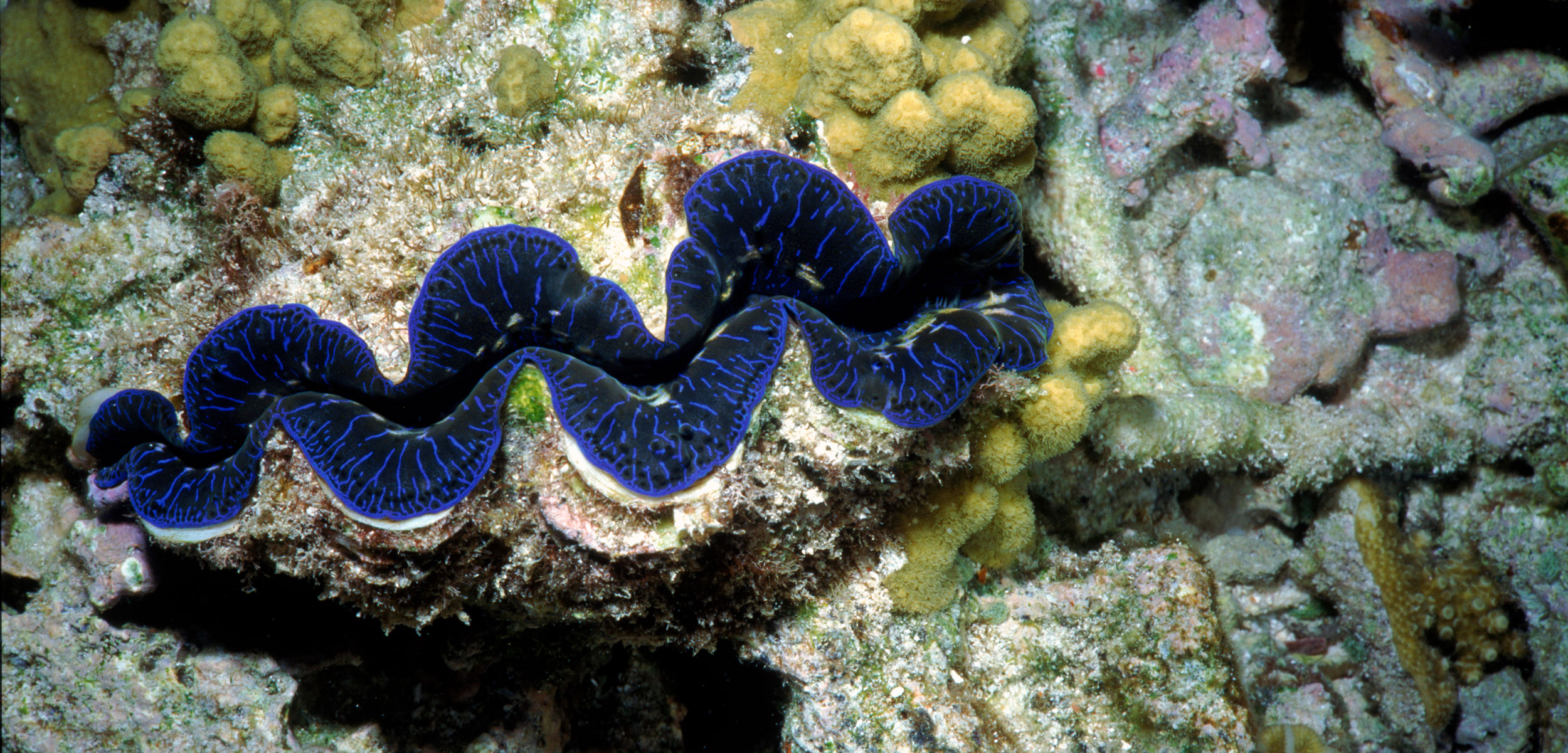Giant Clams Spread Their Symbiotic Algae through Their Poop
Clam feces may be transporting photosynthetic zooxanthellae all over reefs.
Article body copy
Zooxanthellae—the symbiotic algae that corals and other reef-dwelling invertebrates host in exchange for sugars and the other byproducts of photosynthesis—are critical for the health of reef ecosystems. But little is known about how most of these symbionts are acquired by animals and cycled around the reef. Now, new research reveals a key vessel for the nutritional fortune: giant clam poop.
The study, led by Kazuhiko Koike, a marine ecologist at Japan’s Hiroshima University, investigated potential external sources for zooxanthellae, since previous research showed most animals that host zooxanthellae did not inherit it from their parents. Giant clams were obvious candidates since they, like corals, also receive a large proportion of their energy from the photosynthetic algae. The clam hosts the algae in tubes that run from its stomach through its mantle, the fleshy body wall between the halves of its great shell. There, exposed to sunlight, the algae thrive.
When one of Koike’s students was cleaning up a clam tank in the lab, they put a clam’s fecal pellets under a light microscope and noticed that they appeared to be packed with dark, oval zooxanthellae. Under a fluorescent microscope, which detects photosynthetic activity, the scientists confirmed that the pellets contained zooxanthellae. Lots of them. But the observation came with a surprise. Unlike the digested zooxanthellae Koike’s team had previously observed in feces excreted from corals, these algae were alive. This made the researchers think: what if clam poop—with its live algae—was the source of zooxanthellae for other hosts?
To see if the algae could jump from poop to new clams, the researchers harvested adult clams from reefs in Okinawa, Japan, brought them to the lab, and placed their poop in beakers containing tiny, not-yet-zooxanthellae-harboring clam larvae they had raised in captivity.
As the feces broke down and the zooxanthellae escaped into the water, many larvae ate them. About a third of the baby clams moved the zooxanthellae into their stomachs, with a subset of those moving the algae to their mantles, establishing symbiosis. The results reveal that giant clam poop, by circulating the algae on the reef, can transmit zooxanthellae between individuals.
Koike thinks it’s very likely that the zooxanthellae passed in clam poop are not only transmissible between different clam species but to corals as well.
“If corals also acquire zooxanthellae from giant clams, giant clams are very much necessary in the coral ecosystems,” says Koike. “In many cases of coral reef rehabilitation, people only think about corals. But they must also consider other components of the ecosystem.”
Mei Lin Neo, a marine ecologist at the National University of Singapore not involved with this study, agrees and says that it adds to “the suite of known ecological roles of giant clams and contributes to justifying their conservation.”
For Miguel Mies, a coral reef ecologist at the University of São Paulo in Brazil, also not involved with this study, the clam poop findings will have implications for how we understand the cycling of the zooxanthellae themselves, a process that is critical for reef resilience.
“This [research] could help a bit in understanding coral reef conservation because the health of coral reefs is so connected to symbiont diversity and symbiont presence that the more you learn about the symbionts and how they work, the more prediction power you will have on how coral reef ecosystems will respond to disturbances and climate change,” says Mies.
In regards to climate change, Koike thinks the clams may excrete more heat-tolerant algae under high-temperature conditions. A rich population of giant clams may provide sturdy, environmentally suitable zooxanthellae to surrounding corals.
Mies emphasizes that the fate of coral reefs hinges on the lives of zooxanthellae since corals and giant clams cannot live for long without them.
“The symbiont is the main protagonist of coral reefs,” says Mies. “Without zooxanthellae, there are no coral reefs.”

